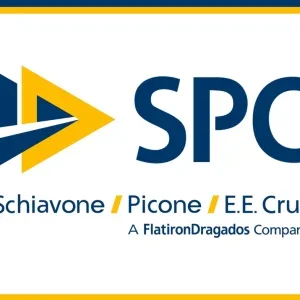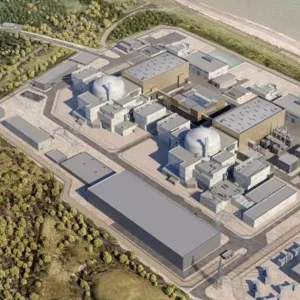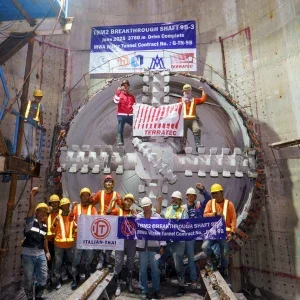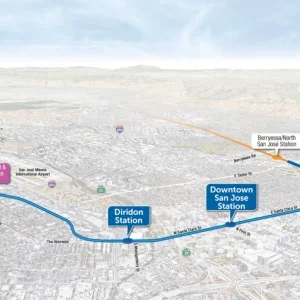Tunnelling on the 1.2km long twin bore Antwerp high speed rail tunnels started on 25 September, following a ceremony to launch the TBM.
The Herrenknecht 8.3m diameter slurry shield machine arrived on site in August. It will be operated by JV ASDAM, a consortium of CFE/Van Laere/De Nul/CEI/Wayss and Freytag/SMET/Dumez.
The tunnels will have a single track configuration with an i.d. of 7.3m. The TBM has a sacrificial skin and will erect a concrete lining of eight, 1.5m wide segments including a small keystone.
Once the machine has completed the first bore it will be transported back through the finished tunnel and reassembled back at the 16m deep start shaft ready to bore the second tube.
The machine will tunnel through tertiary sand containing glauconite clay. As the tunnels run under the highly sensitive architectural areas of the city compensation grouting is anticipated.
The machine will pass under the 19th century Antwerp central station in Belgium, which required a lot of preparatory ground engineering works including: inclined jet grouted piles through and below old foundations; edge girder sheeted trenches; side wall tunnels formed by trench sheeting; nailed walls; inclined excavations behind vaults; temporary large diameter piles to support the eastern side of the new surface deck; and mining beneath the new deck to provide the space for one or two lower levels of new rail tracks. The works had to be achieved while maintaining at least 70% of normal traffic, and keeping at least two platforms operational.
Earlier this year, Dirk van Ooteghem, representing the client, TUC Belgium Railways, said the project was within budget, but the tight confines of the site was having an impact on resources.
The tunnel construction is scheduled for completion in January 2004. When operational, it will form a vital last section on the Paris to Amsterdam High Speed Rail Link. The project is being financed by the Belgium Federal State and the European Union.







